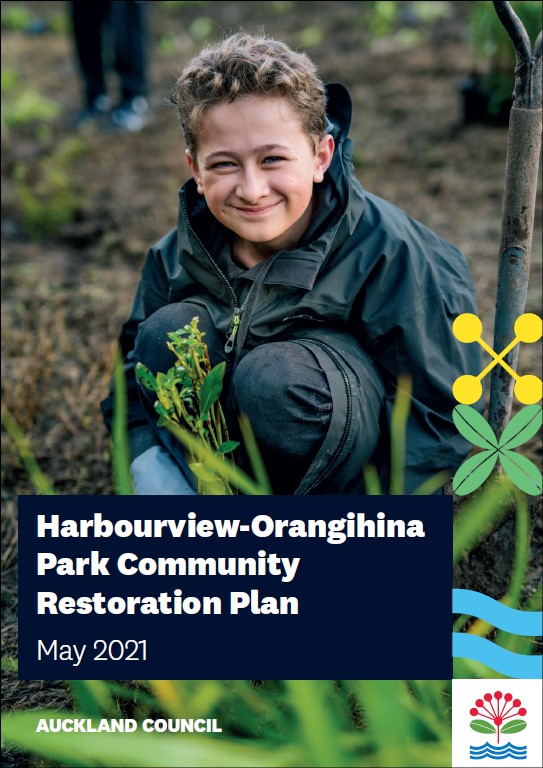Harbourview-Orangihina Park community restoration plan
Author:
Auckland Council | Henderson-Massey Local BoardSource:
Auckland Council | Henderson-Massey Local BoardPublication date:
2021Topics:
EnvironmentThis restoration plan for Harbourview-Orangihina Park aligns with, and is guided by, the Harbourview- Orangihina Park Master Plan that was adopted in 2019. It seeks to provide a detailed restoration plan for the park that incorporates community and iwi values and perspectives, and can be easily adopted by community groups and iwi to encourage engagement and collaboration.
Harbourview-Orangihina Park encompasses 85 hectares of pastoral and intertidal coastal land located on the eastern fringe of Te Atatū Peninsula adjacent to the Waitematā Harbour near the Whau River mouth. It retains a wilderness feel, in contrast to adjacent residential areas. It is home to outstanding geological formations, rare and endangered fauna – particularly wetland birds and shorebirds – as well as freshwater and saline wetlands. This report summaries these values as well as the environmental threats, such as introduced species, urban catchment influences on water quality, and sea level rise.
As a community restoration plan, its central tenet is that engagement and involvement of people is key to the park’s restoration. This includes restoration of cultural connections or indeed reconnection of people to the environment they live in through involvement in restoring the mauri of the park. Principles taken from te ao Māori of kaitaikitanga, maanakitanga and mātaurangi Māori (loosely be translated as guardianship, hospitality and Māori knowledge) can guide its implementation. These are inclusive comments that do not exclude any groups or individuals from contributing to the park’s restoration.
There is a huge opportunity to take a whole-system (ki uta ki tai – mountains to the sea) approach to the park’s restoration, as the catchments are small and contained within the community of Te Atatū Peninsula. The consistent feedback from community stakeholders and Auckland Council staff was that to fully embrace this this opportunity it would be necessary to have a dedicated person as a coordinator to assist in implementing this plan, and this is included in the recommendations.
The report is guide rather than a rule book, with priorities to be decided by those undertaking the work, as resources allow. It is hoped that the plan will be a living document that will be updated as the project continues. There is still much to learn, and many opportunities for further research and shared discoveries at Harbourview-Orangihina Park.
Auckland Council
Henderson-Massey Local Board
May 2021
